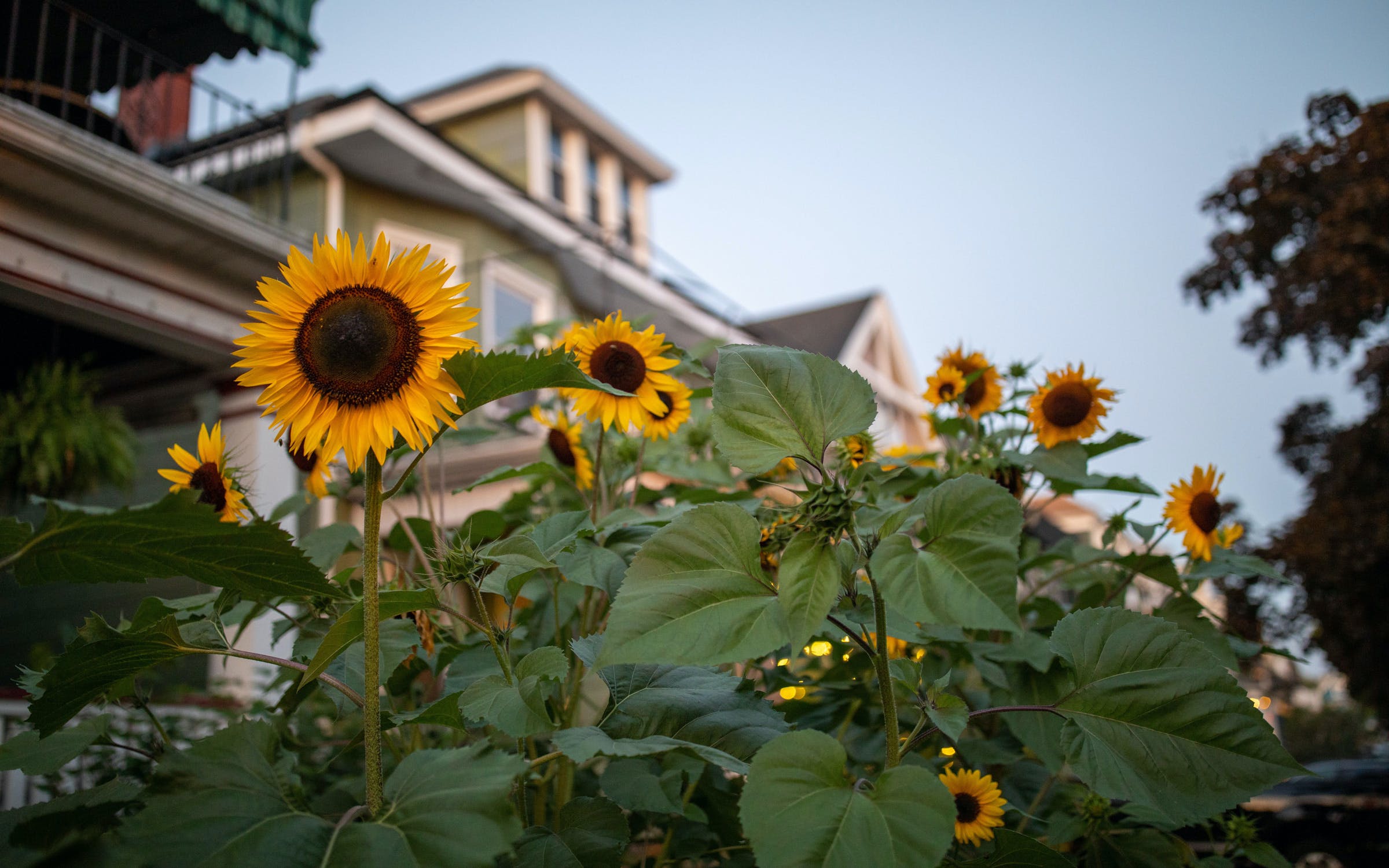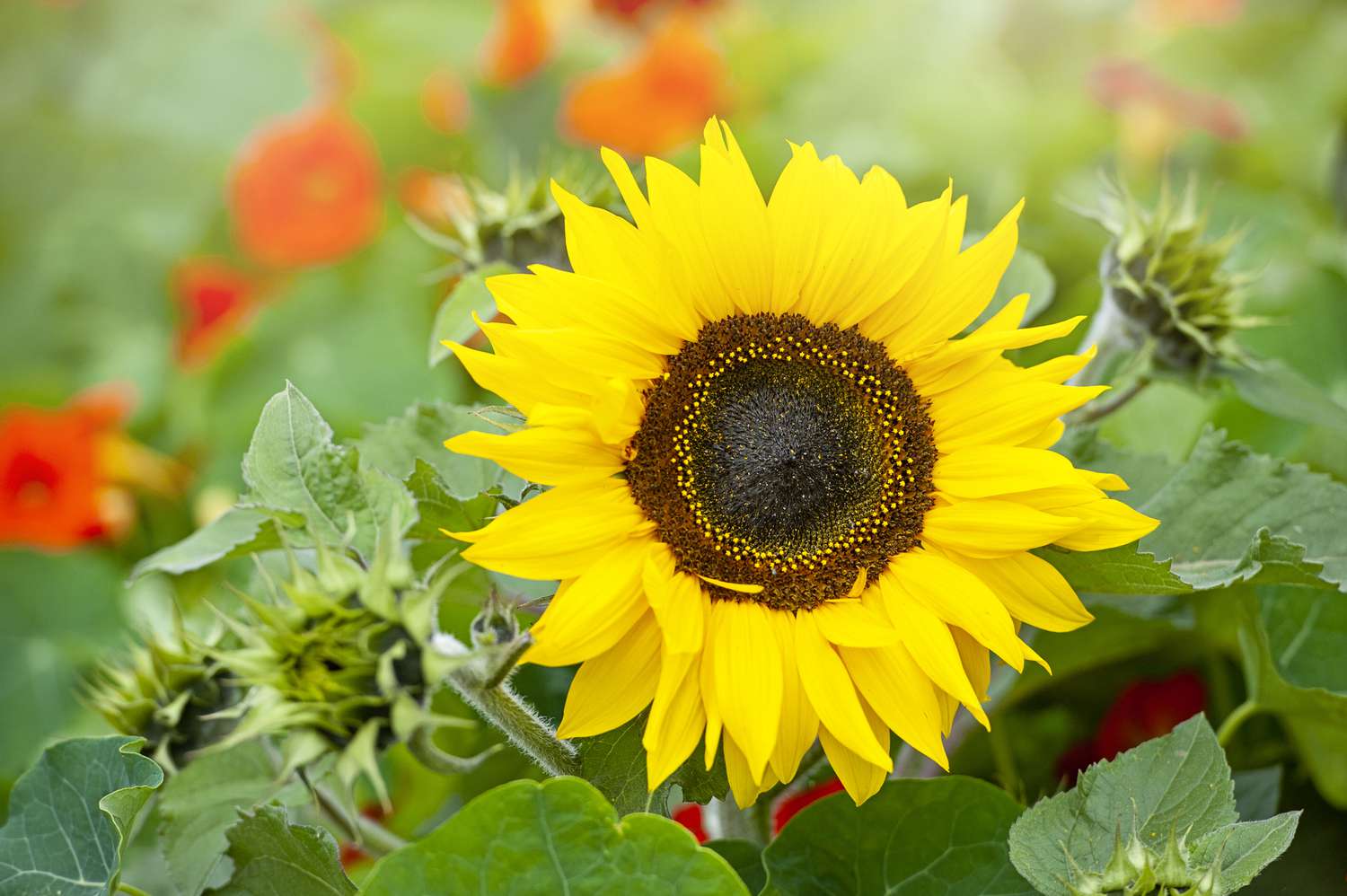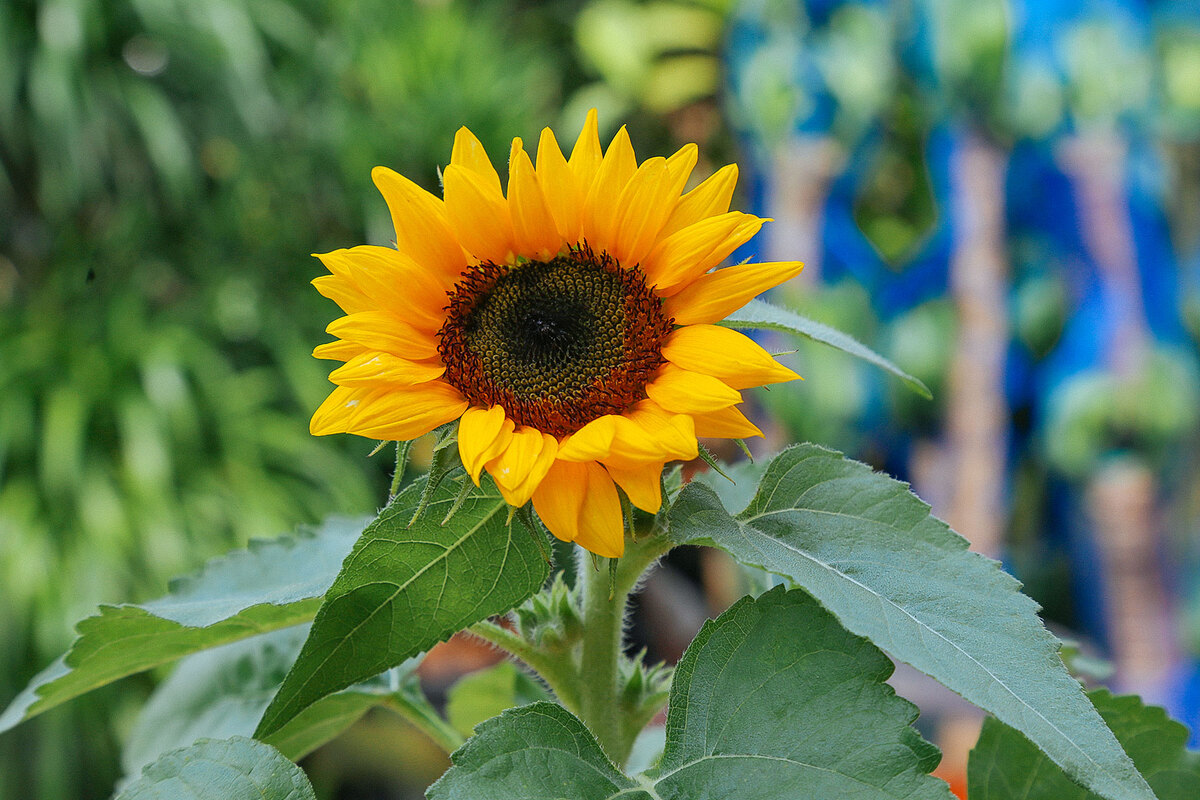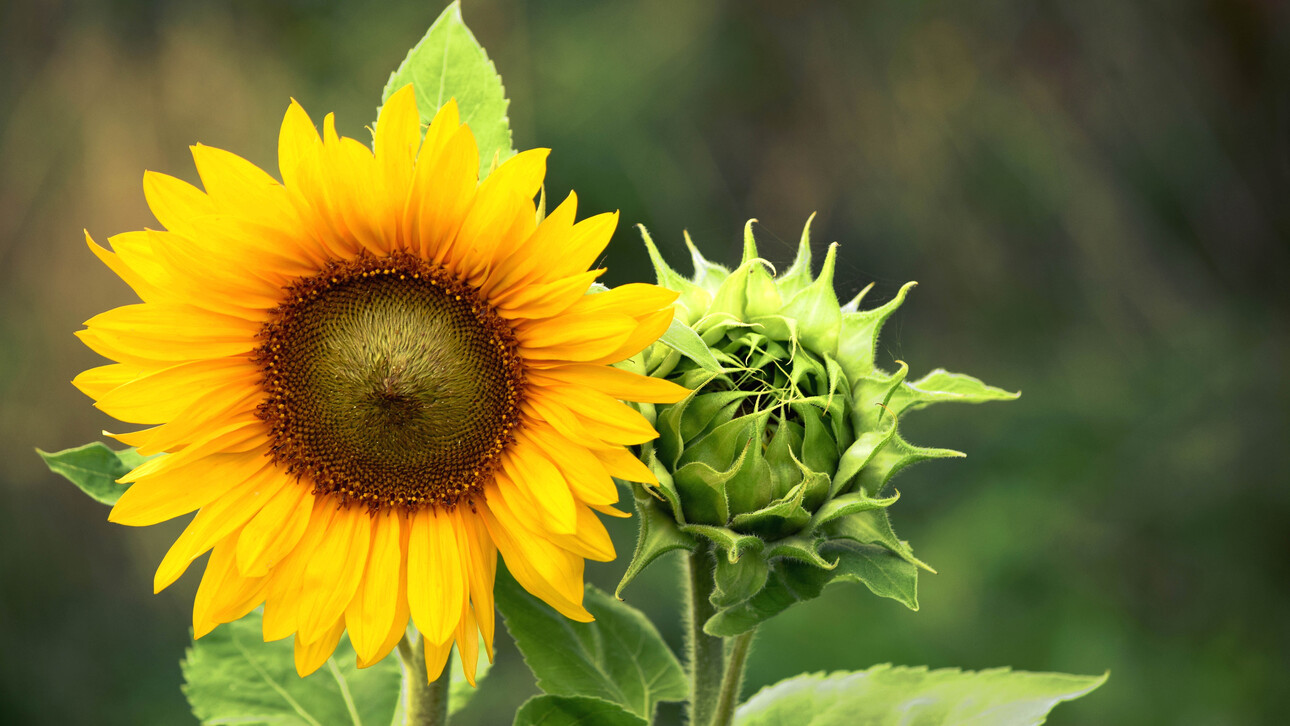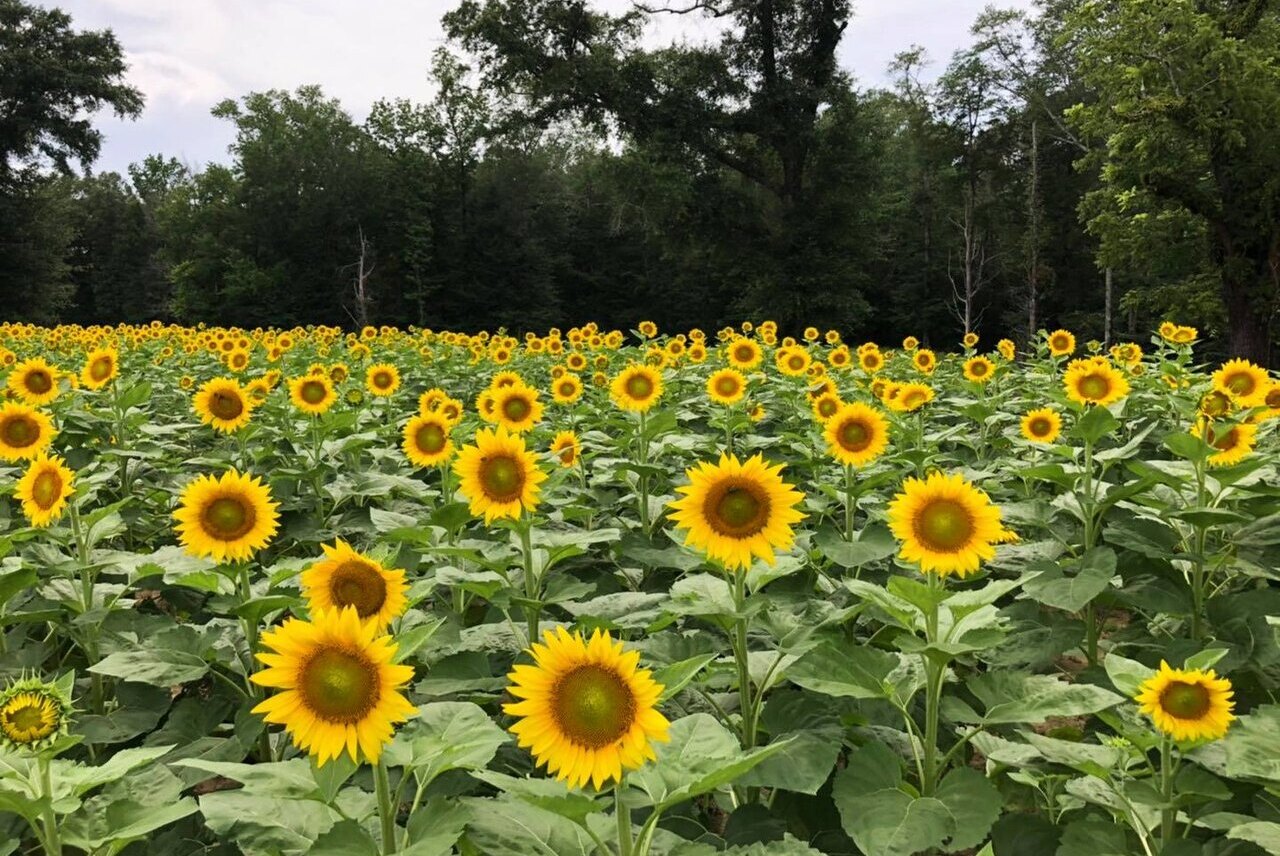Home>Types of Gardening>Ornamental Gardening>When Do I Plant Sunflower Seeds
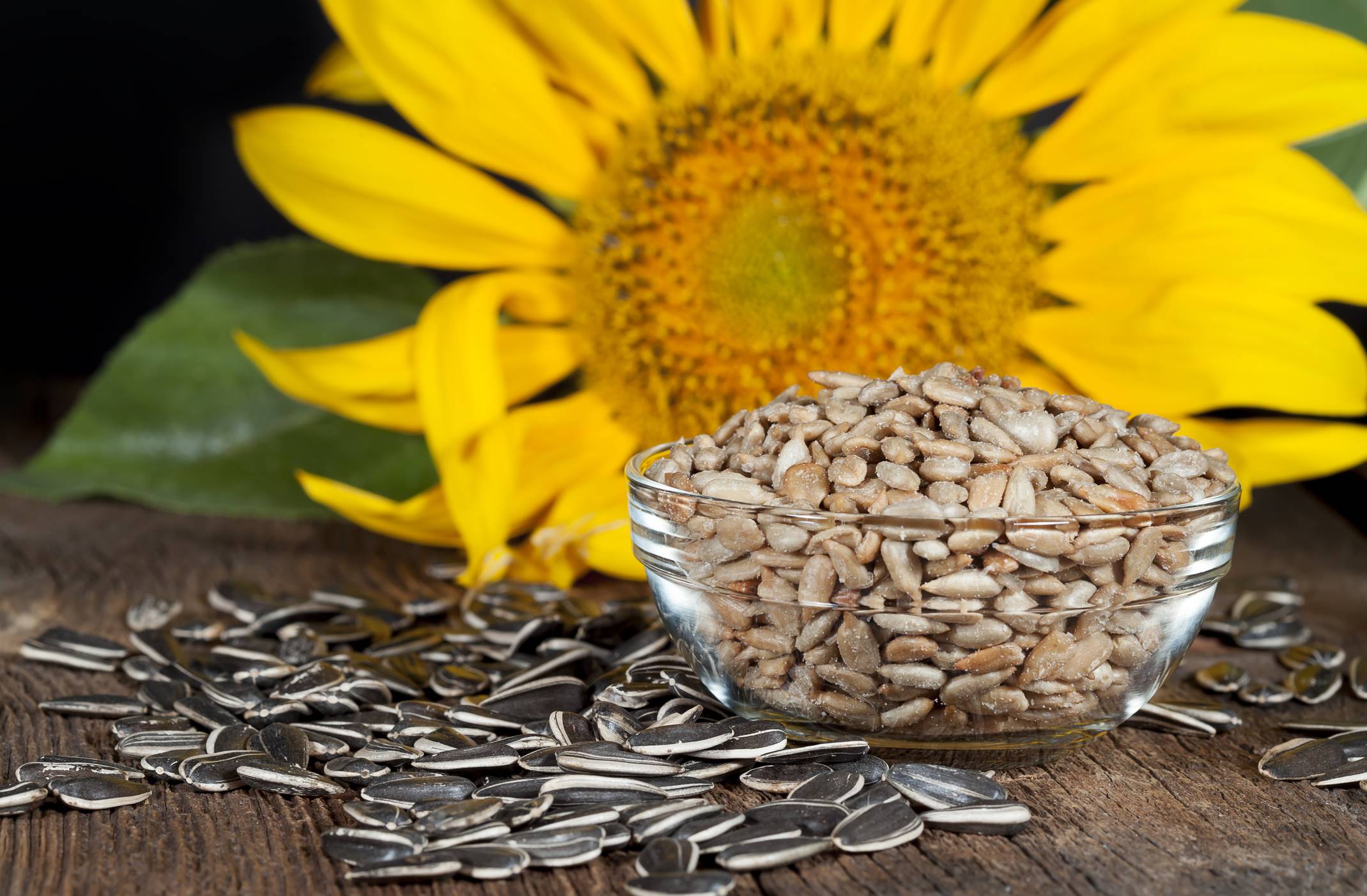

Ornamental Gardening
When Do I Plant Sunflower Seeds
Modified: February 9, 2024
Learn the best time to plant sunflower seeds for your ornamental gardening projects. Find out when to start growing these beautiful flowers and enjoy a vibrant garden.
(Many of the links in this article redirect to a specific reviewed product. Your purchase of these products through affiliate links helps to generate commission for Chicagolandgardening.com, at no extra cost. Learn more)
Table of Contents
Introduction
Growing your own sunflowers can be a rewarding and enchanting experience. From their vibrant colors to their towering presence, sunflowers are a favorite choice for many gardeners. These magnificent flowers not only beautify any space but also attract pollinators like bees and birds.
Whether you have a spacious backyard garden or a tiny balcony, planting sunflowers can add a touch of natural beauty to your surroundings. However, before you get started, it’s essential to know when to plant sunflower seeds for optimal growth and blooming.
In this article, we will explore the factors to consider when determining the ideal time for planting sunflower seeds. From temperature requirements to soil preparation and planting methods, we will guide you through the process of successfully planting and growing sunflowers.
Before delving into the specifics, it’s important to note that the timing of sunflower seed planting may vary depending on your geographical location and climate. By understanding the requirements of sunflowers and considering the unique conditions of your area, you will be better equipped to time your seed planting for the best results.
Factors to Consider
When determining the best time to plant sunflower seeds, there are several important factors to consider. These factors will help you create the optimal growing conditions for your sunflowers and ensure a successful and bountiful harvest.
- Climate: Sunflowers thrive in warm climates and require a minimum temperature of 50°F (10°C) to germinate. It’s crucial to choose a planting time when the risk of frost has passed and the average temperatures are consistently above this threshold. Consider the length of your growing season and choose a time that allows your sunflowers to reach maturity before the onset of cold weather.
- Daylight: Sunflowers are called so for a reason—they love sunlight! They require full sun, which means at least six to eight hours of direct sunlight each day. The amount of daylight available varies depending on the time of year, so keep this in mind when planning your planting time. Aim for a period when the days are long and the sun is high in the sky.
- Soil Quality: Sunflowers prefer well-draining soil with a pH level between 6.0 and 7.5. It’s important to prepare your soil ahead of time by removing weeds, adding compost or organic matter, and ensuring adequate drainage. Conduct a soil test to determine if any adjustments need to be made to optimize the nutrient content and pH level for healthy sunflower growth.
- Space: Sunflowers are known for their impressive height, with some varieties reaching up to 12 feet (3.6 meters) tall. Consider the space you have available and select a planting location that allows your sunflowers to grow without obstruction. Additionally, ensure they are not shaded by nearby trees or structures that may limit their access to sunlight.
By taking these factors into account, you will be well on your way to creating the ideal environment for your sunflowers to flourish. The next step is to determine the specific planting time based on your region and the requirements of sunflower seeds.
Temperature Requirements
Temperature plays a critical role in the successful growth and development of sunflowers. They thrive in warm weather and require certain temperature conditions for germination, growth, and blooming.
The minimum soil temperature for sunflower seed germination is around 50°F (10°C). It is important to wait until the soil temperature has reached this threshold before planting your sunflower seeds. Planting too early, when the soil is still cold, can lead to poor germination and stunted growth.
However, sunflowers are generally cold-tolerant plants and can withstand light spring frosts once they have established themselves. Make sure to check the frost date for your region and wait until the risk of frost has passed before planting your sunflower seeds.
For optimal growth and blooming, sunflowers thrive in temperatures ranging from 70°F to 78°F (21°C to 26°C) during the day. They can tolerate higher temperatures, but prolonged heat can stress the plants. It is beneficial to choose a planting time that ensures your sunflowers receive these temperature ranges during their growing season.
In regions with extremely hot summers, planting sunflowers in early spring or late summer can be a good strategy. This allows the plants to avoid the hottest temperatures while still benefiting from sufficient heat for growth. Additionally, selecting sunflower varieties that are more heat-tolerant can help ensure their success in high-temperature environments.
By considering the temperature requirements of sunflowers and aligning your planting time accordingly, you can provide the optimal conditions for your sunflower seeds to thrive and produce beautiful blooms.
Soil Preparation
Proper soil preparation is crucial for creating a favorable environment for sunflower growth. Sunflowers prefer well-draining soil with a pH level between 6.0 and 7.5. Here are some steps to follow for effective soil preparation:
- Remove weeds: Before planting your sunflower seeds, it is essential to clear the planting area of any weeds or unwanted vegetation. Weeds can compete with sunflowers for nutrients, water, and sunlight, hampering their growth. Use a garden fork or shovel to remove weeds and their roots to ensure a weed-free planting bed.
- Add organic matter: Incorporating organic matter, such as compost or well-rotted manure, into the soil can greatly improve its structure and fertility. Organic matter helps retain moisture, improves soil drainage, and adds essential nutrients. Spread a layer of organic matter over the planting area and till or dig it into the soil to a depth of about 8-10 inches.
- Check soil drainage: Sunflowers require well-draining soil to prevent waterlogged conditions. Excessive moisture can lead to root rot and other fungal diseases. To determine if your soil drains well, dig a hole and fill it with water. If the water drains within a few hours, the drainage is adequate. If it takes longer, you may need to amend the soil with sand or perlite to improve drainage.
- Test soil pH: Conduct a soil test to determine the pH level of your soil. Sunflowers prefer a slightly acidic to neutral pH range. If the soil pH is too low (acidic), you can add lime to raise it, or if it is too high (alkaline), you can add elemental sulfur to lower it. Adjusting the pH level can help ensure optimal nutrient availability to your sunflowers.
By following these soil preparation steps, you can create a nutrient-rich and well-draining environment for your sunflowers. This will support their healthy growth and development, increasing the likelihood of a successful and vibrant sunflower garden.
Planting Time
Choosing the right planting time is crucial for the success of your sunflower garden. The optimal planting time depends on various factors, including your location, climate, and the specific variety of sunflowers you’re planting.
As a general guideline, it’s important to wait until the danger of frost has passed before planting sunflower seeds. The cold temperatures of early spring can hinder germination and slow down growth. Check with your local agricultural extension office or online resources to determine the average last frost date in your area.
In most regions, planting sunflower seeds in late spring or early summer, when the soil has warmed up and the weather has become consistently mild, is ideal. This allows the seeds to germinate and the seedlings to establish themselves before the onset of hot summer temperatures.
Sunflowers typically take around 70 to 100 days to reach maturity, depending on the variety. Consider the length of your growing season and select a variety that can comfortably mature within that timeframe. It’s also important to consider the desired bloom time, especially if you’re planting sunflowers for a specific event or aesthetic purpose.
When planting sunflower seeds, it’s recommended to sow them directly into the ground rather than starting them indoors. Sunflowers have deep taproots and don’t transplant well. Sow the seeds at a depth of 1 to 2 inches and space them according to the variety’s specific requirements.
Lastly, remember to provide adequate spacing between sunflower plants to allow room for their sizeable growth. Depending on the variety, spacing can range from 1 to 3 feet apart. This allows each plant to receive ample sunlight, nutrients, and water for optimal growth.
By carefully considering the planting time and following the specific instructions for your sunflower variety, you can ensure a successful planting and enjoy the beauty of vibrant sunflowers in your garden or landscape.
Sunflower Seed Planting Methods
There are several methods you can choose from when it comes to planting sunflower seeds. The method you select depends on your preference, available space, and the specific needs of your sunflower variety. Here are a few popular planting methods:
- Direct Seeding: Direct seeding involves sowing the sunflower seeds directly into the ground where they will grow. This method is the most common and straightforward approach. Prepare the soil as mentioned earlier, and then place the seeds in the prepared soil at the recommended spacing and depth. Water the area gently after planting to ensure good seed-to-soil contact and proper moisture levels for germination.
- Seedling Transplanting: If you prefer to start your sunflowers indoors or have specific space constraints, you can start sunflower seeds in containers or seed trays before transplanting them into the garden. Use well-draining soil and sow the seeds according to the recommended spacing and depth. Once the seedlings have developed a few sets of leaves and the danger of frost has passed, carefully transplant them into the garden, ensuring they have enough space to grow.
- Succession Planting: Succession planting involves planting sunflower seeds in multiple batches at different time intervals. This method allows for a prolonged blooming period and a continuous supply of fresh sunflowers. Start by planting the initial batch of sunflower seeds, and once they begin to bloom, stagger the planting of subsequent batches at regular intervals, such as every two weeks. This way, you can enjoy a continuous display of sunflowers throughout the season.
- Container Gardening: Sunflowers can also be planted in containers, making them an excellent option for those with limited outdoor space. Choose a large container with proper drainage holes and fill it with well-draining potting soil. Sow the sunflower seeds according to the recommended spacing and depth. Place the container in a spot that receives full sun, and water the soil regularly to keep it consistently moist. Be mindful of the size of the container and select sunflower varieties that are suitable for container gardening.
By selecting the planting method that aligns with your needs and circumstances, you can successfully plant and grow sunflowers to enjoy their stunning beauty and vibrant colors.
Watering and Care
Proper watering and care are essential for the healthy growth and development of sunflowers. Providing adequate water and attending to their needs throughout the growing season will help ensure robust plants and vibrant blooms. Here are some watering and care guidelines to follow:
Watering: Sunflowers require regular watering, especially during periods of dry weather. Water deeply, ensuring the soil is evenly moist but not waterlogged. Avoid overhead watering to prevent fungal diseases. Instead, water at the base of the plants, directing the water towards the root zone. Monitor the soil moisture level regularly and adjust your watering schedule accordingly.
Fertilizing: Sunflowers are generally low-maintenance plants and do not require excessive fertilization. However, incorporating organic matter into the soil during the preparation stage can provide a good nutrient base. If necessary, you can apply a balanced, slow-release fertilizer or a top dressing of compost during the early stages of growth to provide additional nutrients. Be sure to follow the instructions on the fertilizer package and avoid over-fertilizing, as this can lead to excessive foliage growth at the expense of flower production.
Weed Control: Regular weed control is important to minimize competition for nutrients and sunlight. Keep the area around your sunflower plants free from weeds by hand-pulling or using appropriate weed control methods. Applying a layer of mulch around the base of the plants can also help suppress weed growth and retain moisture in the soil.
Pest and Disease Management: Sunflowers are generally resilient against pests and diseases. However, some common pests, such as aphids or caterpillars, may occasionally affect the plants. Monitor your sunflowers regularly and take appropriate action, such as using organic pest control methods or removing affected leaves. Good airflow around the plants can also help prevent fungal diseases. If necessary, treat any diseases promptly with organic fungicides or consult with a local gardening expert for advice.
Support and Staking: As sunflowers grow, some tall varieties may require support or staking to prevent them from bending or breaking under their own weight. Install stakes or provide a trellis system early in the season to support the plants as they grow. Secure the stems to the stakes using soft ties or twine, being careful not to damage the plants in the process.
By following these watering and care guidelines, you can ensure the health and vitality of your sunflowers throughout the growing season, leading to a beautiful display of colorful blooms.
Harvesting Sunflower Seeds
Harvesting sunflower seeds is an exciting and rewarding experience. After nurturing your sunflowers throughout the season, it’s time to enjoy the fruits of your labor. Here are the steps to harvest sunflower seeds:
Observation: As your sunflowers mature, they will begin to show signs of readiness for harvest. The back of the flower head will turn yellow or brown, and the petals will start to wilt and fall off. Additionally, the seeds on the face of the flower head will turn plump and develop a darker color.
Timing: Timing is crucial for harvesting sunflower seeds. Harvest too early, and the seeds may be too small and immature. Harvest too late, and the birds or rodents could feast on the seeds before you have a chance to collect them. Aim to harvest when the back of the flower head turns brown and the seeds appear fully developed. This usually occurs around 30 to 45 days after the flower blooms.
Preparation: To prepare for harvesting, gather the necessary tools, such as garden shears or a sharp knife, a bucket or bag for collecting the seeds, and a drying area, such as a screen or a tray lined with paper towels.
Harvesting: The first step is to cut the sunflower heads from the stem using the shears or knife. Leave a few inches of stem attached to the flower head for easier handling. If you’re harvesting multiple sunflower heads, keep them organized and properly labeled to avoid confusion later.
Seed Extraction: Once the sunflower heads are cut, it’s time to extract the seeds. Rub your hand over the face of the flower head to dislodge the seeds. Alternatively, you can use a fork or your fingers to gently pry the seeds out of the head. Try to remove as many seeds as possible without damaging them or breaking them apart.
Drying: After extracting the seeds, spread them out in a single layer on a drying area, making sure they are not touching each other. Place the drying area in a warm and well-ventilated location away from direct sunlight. Allow the seeds to dry for a couple of weeks until they become fully dry and the moisture content decreases. You can test the dryness by biting into a seed – it should not be soft or milky but instead have a crisp texture.
Storage: Once the seeds are thoroughly dry, store them in an airtight container, such as a glass jar or a ziplock bag. Keep the container in a cool and dry place to maintain the quality of the seeds. Properly stored sunflower seeds can stay viable for several years.
By following these steps, you can harvest your sunflower seeds and enjoy them for various purposes, including eating them as a nutritious snack or saving them for planting in the next growing season.
Conclusion
Growing sunflowers from seeds is a gratifying and enjoyable process that allows you to witness the beauty and marvel of these stunning plants up close. By considering various factors such as climate, soil preparation, and planting time, you can provide your sunflowers with the optimal conditions for growth and blooming.
Timing is key when planting sunflower seeds. Waiting until after the last frost and ensuring the soil temperature is suitable for germination allows your sunflowers to establish themselves and thrive. Additionally, providing full sun, well-draining soil, and adequate spacing sets the stage for healthy growth.
Throughout the growing season, paying attention to watering, proper care, and maintenance is crucial. Consistent watering, weed control, and monitoring for pests and diseases will help ensure vigorous plants and vibrant blooms. Supporting and staking taller varieties can prevent bending or breakage, allowing your sunflowers to reach their full potential.
The ultimate reward comes when it’s time to harvest the sunflower seeds. Observing the signs of readiness, cutting the flower heads, extracting the seeds, and drying them properly prepares you for storing and enjoying the fruits of your labor for years to come.
Whether you’re a master gardener, a beginner, or just someone who appreciates the beauty of nature, planting and growing sunflowers can bring immense joy and satisfaction. So, roll up your sleeves, gather your seeds, and embark on the journey of cultivating stunning sunflowers that brighten up your garden or any space you choose to grow them in.

